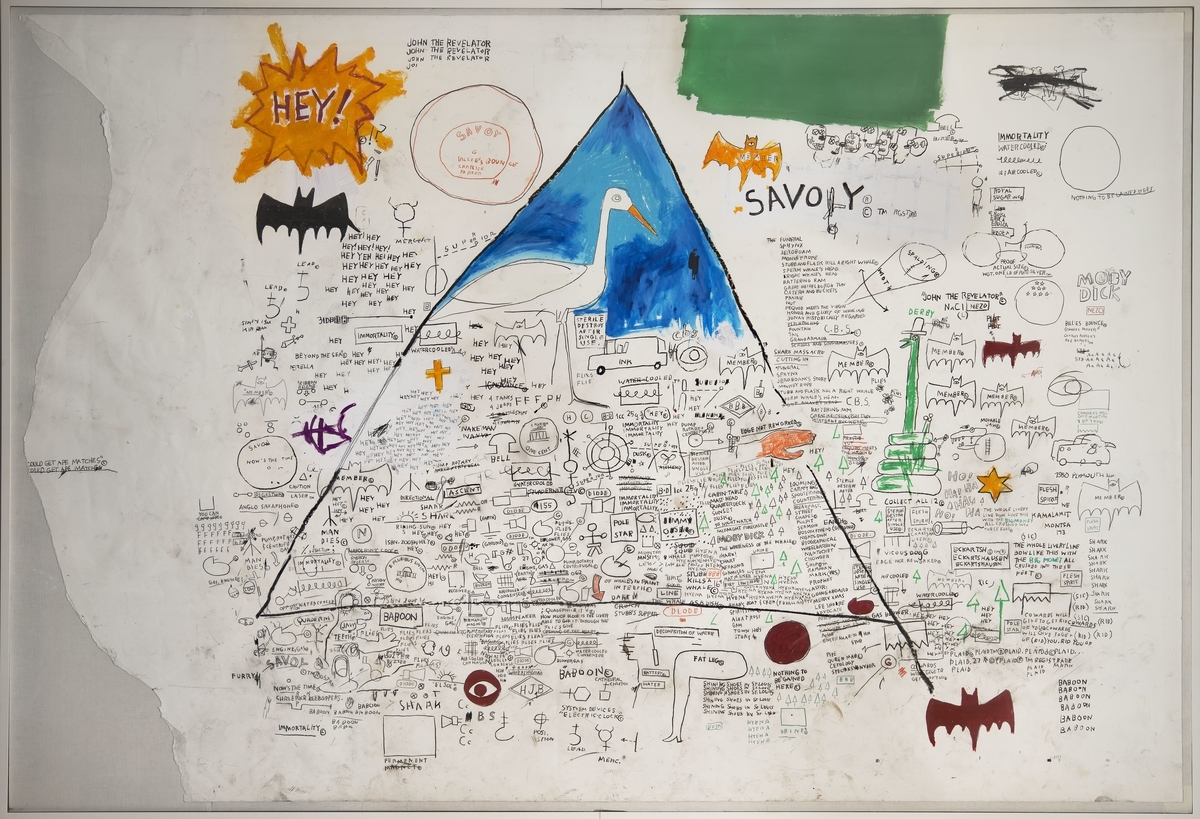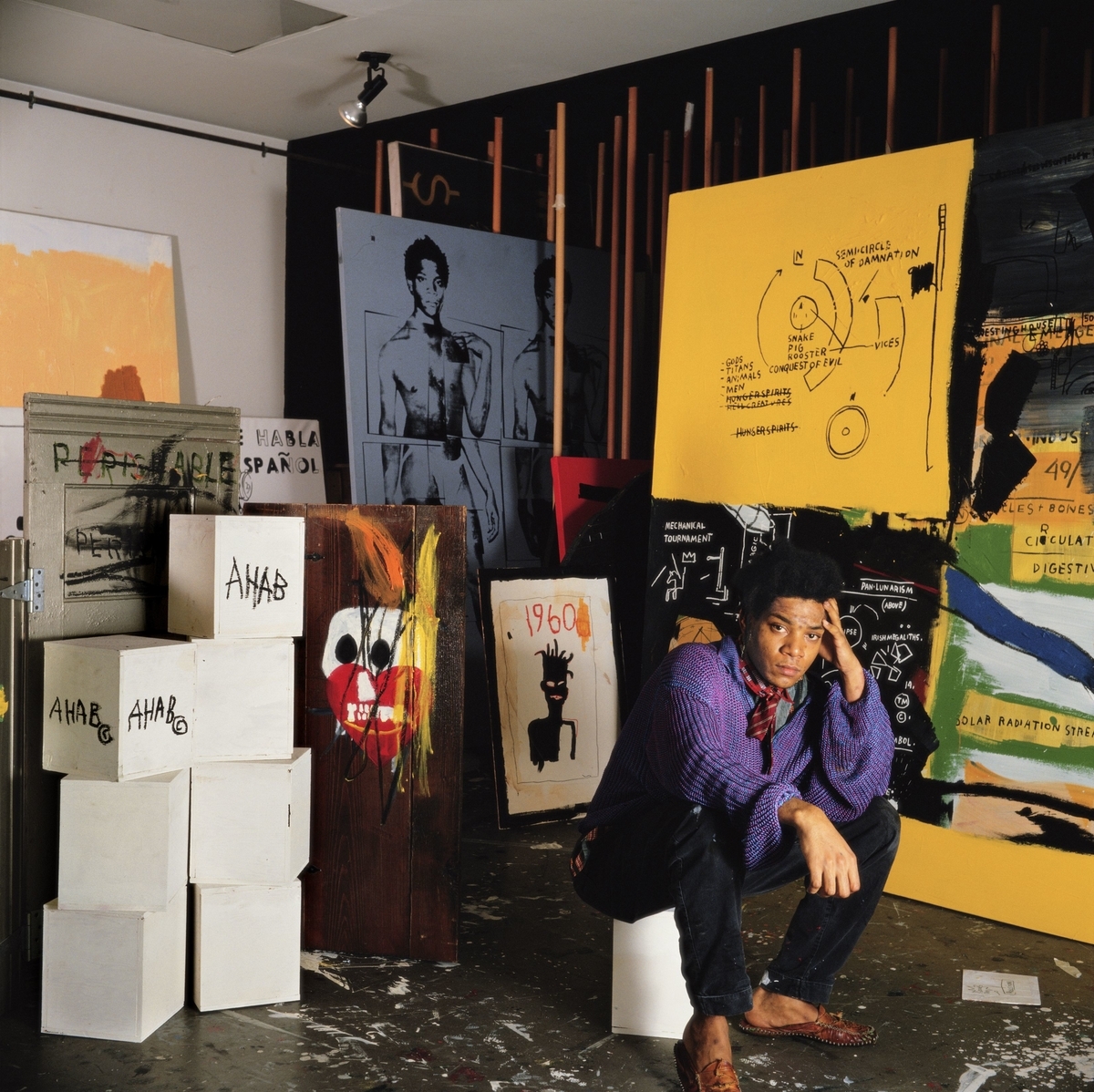Throughout his 27 years, Brooklyn-born artist Jean-Michel Basquiat filled notebooks with the poem fragments and rough drawings that would later inform his legendary neo-expressionist paintings. From his early days as half of graffiti poet SAMO right through to his collaborative works with Warhol, Basquiat kept notebooks chock full of crowns and skeleton-esque sketches, as well as darkly humorous observations about race, class, and urban life. This weekend, The Brooklyn Museum opened Basquiat: The Unknown Notebooks, the first major museum exhibition of over 160 pages of the artist’s personal journals. To celebrate this rare glimpse into the artist’s prolific yet troubled mind, we’ve rounded up eight facts you might not have known about the Radiant Child:

The Brooklyn Museum was one of his favorite spots: From an early age, Basquiat began drawing on sheets of paper his accountant father would bring home from the office. Noting her young son’s preternatural creative aptitude, Basquiat’s mother, Matilde,would bring her son to Manhattan museums and even enrolled him as a junior member at the Brooklyn. Years later, when Interview asked if he still felt any fondness for institutions, Basquiat replied, “I think the Brooklyn is my favorite.”
A childhood accident informed his lifelong work: At just eight-years-old, Basquiat had to have his spleen removed after playing in the street and being hit by a car. While he was recuperating from the injuries, which also included a broken arm, Matilde kept him occupied not with children’s stories or coloring books, but the full on Grey’s Anatomy. The volume’s anatomical diagrams proved massively influential to his future art pieces, especially the Dutch Settlers series.

He was a creative dropout: Between his Haitian-born father and Puerto Rican mother, Basquiat’s home was a multicultural hotbed. By the age of 11, he could fluently speak, read and write English, Spanish, and French. But a rift in his parents’ relationship and his mother’s institutionalization took their toll on the young artist. In the 10th grade, he dropped out of Edward R. Murrow to attend City As School, an alternative high school for creative dropouts that counts the likes of Beastie Boy Ad-Rock, Mekhi Phifer, and Ryder Ripps as alumni.
D-train riders, be on the lookout: After his father kicked him out of the house, Basquiat got by hocking sweatshirts and postcards featuring his artwork on West Broadway. But the young artist really rose to prominence when the graffiti epigrams he scrawled as SAMO caught the attention of downtown’s creatives. While most of the poetry-cum-graf tags were clustered around the SoHo gallery scene, Basquiat occasionally scribbled on D train cars on his way back to Brooklyn. It really wouldn’t surprise us if the city still had trains from 78 circulating, so keep your eyes peeled on your next trip to Prospect Park.
He wasn’t always hairspiration material: Before rocking those epic dreads, Basquiat had some pretty questionable hair looks. During his first appearance on Glenn O’Brien’s public access hangout TV Party back in 79, the then 18-year-old unknown rocked a super weird quaff: bleached, shaved on top almost all the way to the back with a strange landing strip in the middle. Basquiat and O’Brien became fast friends, and the artist frequently made TV Party appearances (fortunately, with a stronger hair game.)
He went from public transportation to one of the city’s most famous public shows: While Basquiat might have gotten his start on the downtown D train, his first (legit) public show was one of the city’s most revolutionary exhibitions. Opening in June 1980, the DIY Times Square Show was staged in an abandoned massage parlor on 41st Street and Seventh Ave. Presenting alongside the likes of Keith Haring, Jenny Holzer, Kenny Scharf, and Kiki Smith, Basquiat’s 15 or so works were all smash successes.
You’d probably never catch him with an iPhone: Although the telephone wasn’t exactly a new invention by the early 80s, the artist wasn’t really feeling the whole voice communication thing. In 83, the artist spoke to Interview about the benefits of swapping telephones for telegrams: “It’s fun. You never know what it could be. ‘You’re drafted,’ ‘I have $2,000 for you.’ It could be anything. And because people are spending more money with telegrams they get right to the point.” But there was a downside to getting off the grid as well, “Now my bell rings at all hours of the night. I pretend I’m not home…”
He could have made it just as big as a musician: Basquiat’s musical legacy extends far beyond dating Madonna. Back in 79, he formed a noise rock band called Grey with filmmakers Shannon Dawson and Michael Holman, as well as actor Vincent Gallo, among others. Grey frequently performed at some of the city’s most legendary spots including Max’s Kansas City, CBGB, and the Mudd Club. In 83, he also produced a rap single, Beat Bop, which featured artists Rammellzee and K-Rob. Oh, he worked with David Bowie and featured in Blondie’s Rapture video, too.
Credits
Text Emily Manning
Photography Tseng Kwong Chi. Jean-Michel Basquiat in his Great Jones Street studio, New York, 1987. Chromogenic print, 50 x 50 in. (127 x 127 cm). Muna Tseng Dance Projects, New York & Eric Firestone Gallery, East Hampton, New York. © 1987 Muna Tseng Dance Projects, Inc. New York. www.tsengkwongchi.com
